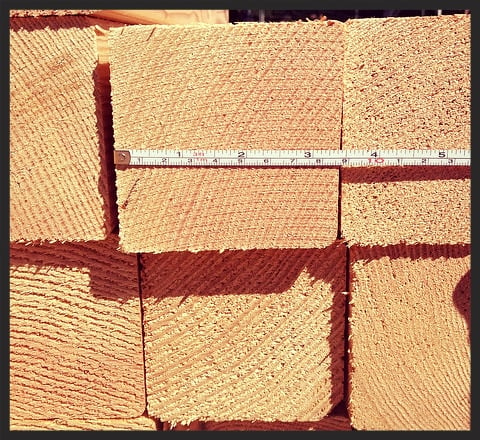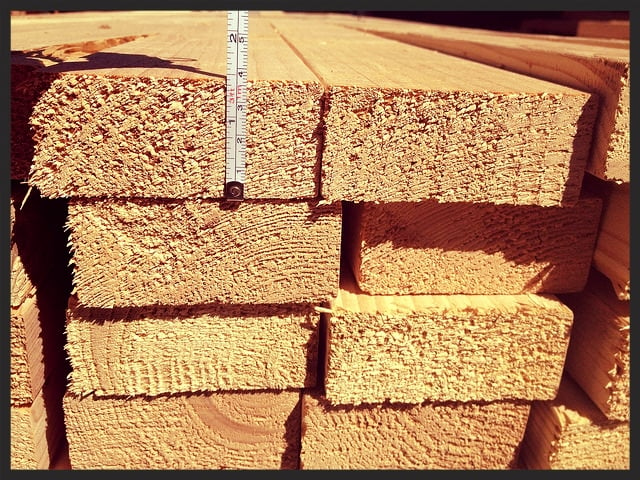Did you know 4x4s are not actually 4 inches by 4 inches? They're actually closer to 3-1/2 inches by 3-1/2 inches! Why isn't lumber the same dimensions as it name? Unraveling the mystery of this confusing wood-sizing phenomenon can certainly leave you scratching your head, we're here to help you figure it all out.

One of the first things to consider is actual height and width are different from the nominal size of the piece of wood you may be shopping for. For example, Alicia Guillette packaging expert at Valley Box Company says:
"The actual size of softwood is effected by several processes such as kiln drying and surfacing. For instance the two-by-four's we use have been surfaced four sides and measure closer to 1-1/2" x 3-1/2 inches."

The next thing to consider is the actual sizing varies by type of wood; softwood, hardwood, plywood. The softwood industry is vastly different from the hardwood industry because of the primary uses.
- Hardwoods (such as oak, cedar and cherry) are used to build custom furniture and cabinetry – where uniform sizes in the raw material is unnecessary. Saw mills want to retain as much usable material as possible to keep prices competitive, which means boards will vary in width to avoid wasted scrap. *Hardwoods derive from evergreen trees which lose their leaves each fall.
- Softwoods are sold in “standard” sizes like 1×6 and 2×8 because they are used by the construction industry who requires standard sizes for; buildings, wood crate manufacturing, door jambs, etc. *Softwoods derive from conifer trees which keep their needles all year long.
SoftwoodThe U.S. Department of Commerce publishes the American Softwood Lumber Standard (ALS) and according to them, softwood lumber is referred to by sizes such as 1x6, 2x4, 4x4, and so on. In these descriptions, the first number represents the thickness and the second number represents the width. As stated earlier, what may bear the name 2x4 or 1x8 is actually a piece of lumber smaller than this size because its has been surfaced on its sides. When buying soft woods you can buy them:
Want a more robust chart? Visit Engineering Tool Box
*Common dimensions, always measure your lumber to confirm. HardwoodHardwood lumber varies from the sizes used for softwood. Names are written as 1/2, 5/8, 3/4, 1, 1 1/4, 1 1/2, 2, 3, and 4. Like softwood, the actual size is smaller. Learn even more about hardwood at Woodworking 101
*Common thickness, always measure your lumber to confirm PlywoodAccording to Baylor, the most common sizes of plywood sold in the U.S. are 3/4", 1/2" and 1/4". However, says Baylor, everyone still calls them by their names: 3/4", 1/2" and 1/4".
|
It's important to know the actual dimensions of your wood building materials. Getting the dimensions right the first time will ensure a smooth design/engineering process. Not knowing the exact dimensions could impact everything from cost to longevity and more. At Valley Box, we understand wood sizing and our engineering takes into account the tolerances in lumber for each custom designed wood crate we create.
No matter how you slice and dice it, wood is wildly beautiful. You probably already knew this, but did you also know that nature’s carbon fiber has more depth than you think? It’s true. Besides being beautiful, durable, versatile, and sustainable, when wood and technology meet, this dazzling material morphs into a high performing matter that can be used as an alternative to aluminum, steel, and many other strong materials. Take a look at our article Wood Box Durability
Yes, with the right type of wood by your side, you can do just about anything. Select the right size, and you can do even more!



